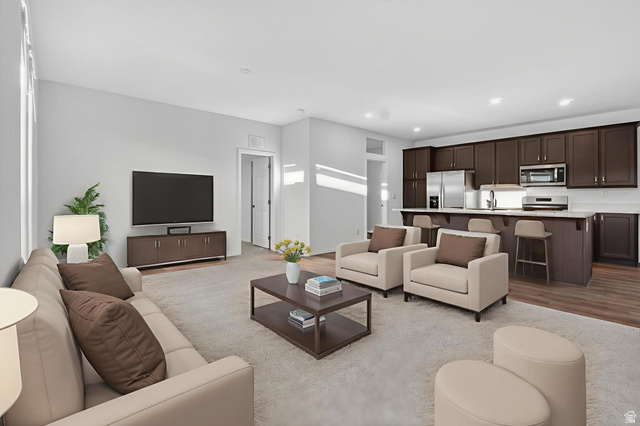
With changing seasons come varying temperatures that can significantly impact indoor comfort levels. Homeowners need to prioritize maintaining a cozy environment throughout the year. Achieving this balance involves understanding various systems within the home, implementing preventive measures, and being proactive in reaching out for professional assistance when necessary. This comprehensive guide aims to equip homeowners with knowledge that contributes to a comfortable living space, regardless of what Mother Nature throws our way.
Understanding HVAC Systems
The HVAC (Heating, Ventilation, and Air Conditioning) system is the backbone of indoor comfort. It regulates temperature and air quality, ensuring that homeowners live in healthy and pleasant conditions. It’s crucial to schedule regular maintenance services for these systems, which helps to catch potential issues before they evolve into costly repairs.
Many industry experts recommend that homeowners have their HVAC systems inspected at least twice a year. Once before the heating season and once before the cooling season. This practice ensures that the system runs efficiently, enhancing energy savings while providing maximum comfort levels.
Another significant aspect to consider is the age of your system. Older units may require more frequent repairs and may need to be replaced entirely if they are beyond their expected lifespan. Fortunately, advancements in technology have introduced highly efficient systems that can offer extensive energy savings compared to older models. Homeowners should weigh their options carefully, potentially consulting with HVAC professionals to determine the best system for their specific needs.
Insulation and Air Sealing
Effective insulation is important in maintaining indoor comfort. Many homeowners may overlook this component, assuming that simply controlling the heating and cooling systems suffices. Insulation plays a critical role by preventing conditioned air from escaping the home, which in turn enhances energy efficiency. Various insulation methods exist, including fiberglass, spray foam, and cellulose, each having its pros and cons.
Homeowners should regularly assess their insulation and conduct tests for air leaks around windows and doors. Sealing these leaks can significantly reduce energy costs and improve comfort levels. Consider the importance of attic ventilation.
Proper ventilation allows for hot air to escape during warmer months, reducing the load on your cooling system. This is particularly important in maintaining a balanced temperature in the living areas, ensuring that homeowners can stay comfortable regardless of outdoor weather conditions.
Explore Utah Real Estate

5618 E SOUTH FORK RD, Provo, UT
$43,000,000
Bedrooms: 6 Bathrooms: 10 Square feet: 22,958 sqft

864 W SAPPHIRE SKY LN #546, St George, UT
$4,300,000
Bedrooms: 7 Bathrooms: 9 Square feet: 5,136 sqft

850 LAZY WAY #8, Francis, UT
$1,300,000
Bedrooms: 4 Bathrooms: 4 Square feet: 2,755 sqft
Routine Maintenance Checks
Homeowners often underestimate the importance of routine maintenance checks on appliances such as HVAC systems, plumbing, and other utilities. Regular examinations can preemptively identify and resolve problems, thereby averting costly repairs later on. To maintain a comfortable indoor climate, it's advisable to keep filters clean and to replace them regularly, as dirty or clogged filters can impede airflow and allow airborne pollutants to circulate.
By routinely changing the filters, homeowners enhance air quality and ensure that their appliances operate efficiently. In relation to plumbing, homeowners must be vigilant about leaks and ensure that all fixtures are functioning correctly. Addressing minor plumbing issues promptly can prevent more significant complications down the line.
Contacting professionals for HVAC services or plumbing repairs is not just about fixing what’s broken. It involves seeking ways to optimize system performance. To enhance comfort, consider investing in a programmable thermostat, which helps regulate temperature settings based on your daily routine. This can lead to substantial savings on energy bills while offering a comfortable living environment throughout the year.
Utilizing Smart Home Technology
Smart home technology is becoming increasingly prevalent in maintaining indoor comfort levels. Homeowners can leverage smart devices for better control over their living environments. Home automation systems facilitate the remote management of temperatures, humidity, and even air quality. These systems often include features that allow users to schedule settings or even control their HVAC systems via smartphones.
This convenience enhances comfort and provides peace of mind, enabling homeowners to manage their home environment even when they're not physically present. Incorporating smart technology allows homeowners to monitor energy usage more effectively, providing detailed insights that can inform decisions about energy efficiency. Smart devices can make a significant difference in daily energy consumption while contributing to a sense of comfort during extreme weather conditions. With real-time data at their fingertips, homeowners can adjust settings as necessary based on their preferences and the current conditions outside.

More Properties You Might Like

1700 W 2700 N #36, Pleasant View, UT
$230,000
Bedrooms: 4 Bathrooms: 2 Square feet: 2,100 sqft

La Casa Cir, St George, UT
$575,500
Square feet: 14,391 sqft

7665 STERLING DR, Park City, UT
$6,100,000
Bedrooms: 5 Bathrooms: 6 Square feet: 4,975 sqft
Seasonal Preparations
Successful indoor comfort is fundamental throughout the four seasons, yet each season demands specific preparations from homeowners. As winter approaches, it’s vital to check and maintain heating systems, including making sure that vents are clear, radiators are working efficiently, and there’s an adequate fuel supply where necessary. During the summer months, attention should shift to cooling units, ensuring that AC systems are cleaned and serviced.
Homeowners should be proactive in assessing and preparing their properties for seasonal changes. It can be by cleaning gutters to prevent water damage or initiating a proactive landscaping plan that assists in regulating temperature through shading and natural cooling. Safeguarding against pests is imperative during warmer months, as insects often seek refuge in attics or basements. Proper pest control measures will contribute to maintaining comfort and healthful living spaces free from allergens that could exacerbate respiratory conditions.
Creating a Comfortable Atmosphere
Aside from mechanical systems, creating a comfortable atmosphere in the home involves consideration of various factors, including décor, furniture arrangement, and even the choice of colors. Soft textiles and colors can influence a room's atmosphere, making it feel inviting and warm. Homeowners should think about utilizing layered lighting, mixing ambiance, task, and accent lighting can significantly enhance comfort levels while promoting a welcoming environment.
Consider the integration of houseplants. They purify the air and can create a calming atmosphere. The aesthetic benefits of adding a few plants can transform a space while contributing to healthier air quality. Homeowners must pay attention to noise levels inside their living environments, which can affect perceived comfort. Soundproofing measures, like heavy drapes or strategically placed rugs, can aid in minimizing noise from outside, fostering a tranquil living space.
Maintaining year-round comfort indoors calls for an integrated approach encompassing system management, seasonal preparations, and creating an inviting atmosphere. Homeowners who remain vigilant and proactive can ensure their living spaces remain comfortable, healthy, and efficient, no matter what external factors impact the weather. Implementing these strategies fosters an environment that encourages relaxation and well-being, promoting a sense of joy year-round.











